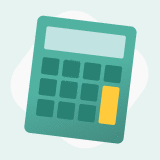This year's Budget has been a mixed bag; while there's good news with a raise in CPF's resale housing grant (hello bigger homes in well-developed neighbourhoods!), most of us are zooming (or rather harping) on the biggest bombshell yet: a 30% price hike in water supply.
A bitter pill to swallow, yes - but an inevitable one. As the price increase takes effect this July, it's time to prepare some counter measures. Whether you're still renovating your home or already settled in, fret not! Check out these 6 simple tweaks to help you save water (and your bills) at home.
1. Get A Front-Load Washing Machine

Architect: Studio JP
Location: Marine Crescent
Yes, it might be a hassle to bend over and throw your clothes in, but hold up! A front-load washer uses less water (almost half) compared to a top loading machine; on average, about 33 litres of water (while the latter takes up almost 60 litres)

Interior Designer: AD.I.WRKS
Location: The Anchorage
Why? That's because front loads tumble-clean your clothes, instead of submerging them in water like top-loads do. They are designed to lift then soak your laundry, similar to hand washing. While they cost $200 - $300 more than top-loads, consider the savings you'd make in the long run!
2. Install A Water Thimble

These button-like accessories for your taps or shower heads are easy to set up, and help to provide a stronger water stream without increasing its flow rate. That means less water used for a more thorough cleanse!
The best part? It's free - PUB gives away a set of water thimbles in their water saving kits, which you can apply to have them sent over to your home. Simply fill up the form here.
3. Put A Soda Bottle Into Your Toilet Tank

Your toilet is one of the biggest eaters of water consumption - older, less efficient models may use up to 21 litres of water on a full flush!
One DIY way to cut down on this insane amount is to place a 1.5L soda bottle, filled up with water/pebbles into the toilet tank. This will trick the flush into thinking it's full, and allow it to instantly operate at a lower flow. This is particularly useful for existing toilet bowls installed; However, if you're still fitting out your new bathroom, the next point might be an even better solution!
4. Choose Low-Flow Bathroom Fittings

Interior Designer: The Scientist
Location: Dakota Crescent
Many fittings in the market now come with water efficient features that provide streams of water at a lesser rate.
Toilet Bowls

Interior Designer: Fifth Avenue Interior
Location: Choa Chu Kang
Besides having a dual flush (less water for liquid waste, more for solids), go one step further by getting one that's marked 'low capacity'. A good benchmark too look out for is 4.5 litres for a full flush, and 3.5 for a reduced one.
Shower Heads

Interior Designer: Poetus
Location: Woodlands
A conventional shower head with no water-saving features might deliver around 16 litres of water per minute. On the flip side, a good low-flow model may use as little as 6 litres. Check out these measurements when shopping for a shower head! You may even install an additional shower shut-off control valve fitted between the head and the pipe. This valve helps to further reduce flow and acts as an on/off switch.
Taps

Taps these days come fitted with all sorts of water-saving features. Get one with an aerator, which controls the amount of water passing through and utilises less water by mixing the liquid with air.

Interior Designer: First Dot Design
Location: Tanglin Halt
Also, choose a mixer tap (provides hot and cold water). A quality model is able to reduce water flow to 6 litres per minute - in comparison to old, unequipped taps at about 15 litres.
5. Change Your Everyday Habits

Interior Designer: 82
Location: Jalan Tanjong
Drops of water can cut through stone - so will small everyday changes significantly impact your water consumption. You'd be surprised by how much water you're wasting by just by brushing your teeth or cleaning the dishes. Here are some tricks to help you save water on these minor tasks.

Interior Designer: Versaform
Location: Tanjong Rhu
- Use a glass of water to rinse when brushing your teeth. Leaving the tap while you're scrubbing away wastes up to 18 litres each time.
- Instead of leaving the tap running while you're cleaning your plates, fill up two basins; one with soapy water, and another with water for rinsing.
- Likewise, adopt this rule when it comes to cleaning dishes or laundry - fill it up to full load before putting it to rinse.
- Boiling pastas, eggs or double boiling stuff? Don't pour away the leftover water - catch it with a container, and use it to water your plants.
6. Check For Leaks

Interior Designer: Boon Siew D'sign
Location: Lompang Road
A silent killer, don't take those stray drips and drops for granted. They may all add up to an additional 15 litres per month! Here are some telltale signs that your home is leaking.
- Turn off all the taps and water outlets for an hour, and check the water meter. If it jumps up, you'll know for sure that there's a leak somewhere.
- Look for any moisture under the sinks or pipes.
- Notice if there are any spots pooling on your walls or ceilings.
A luxurious bathroom doesn't have to be expensive. The right interior designer can advise you on the best fittings that'll help you save up on your bills too! We can match you up with 5 interior designers, based on your budget and style - simply drop in a quote request here!

 Get a budget estimate before meeting IDs
Get a budget estimate before meeting IDs